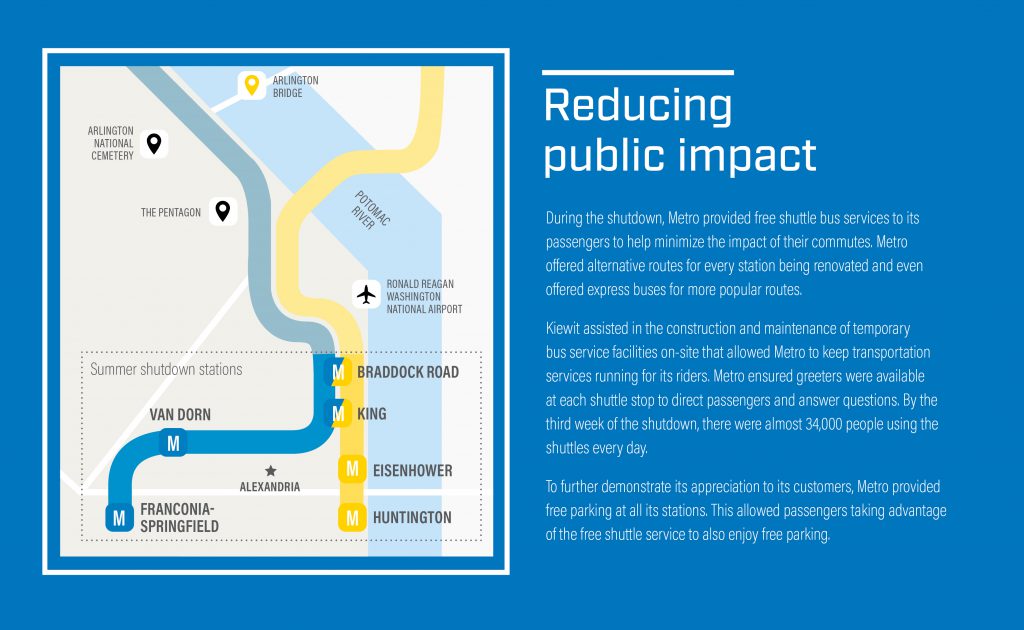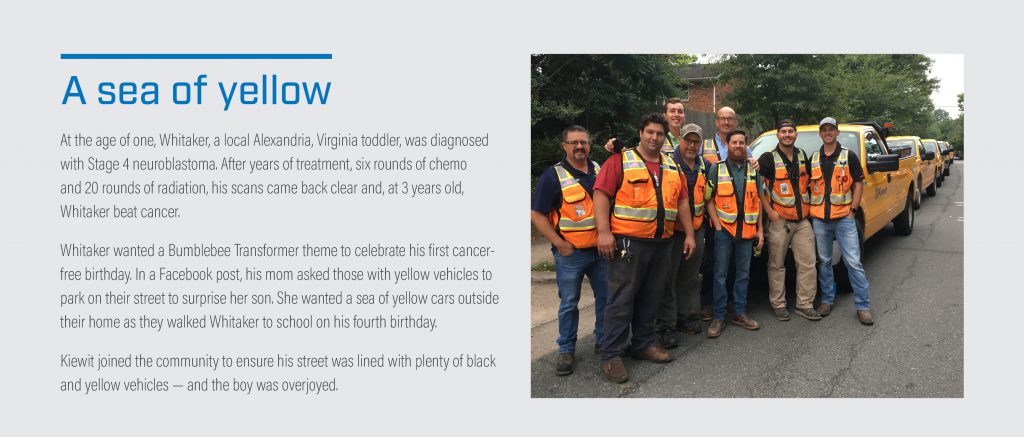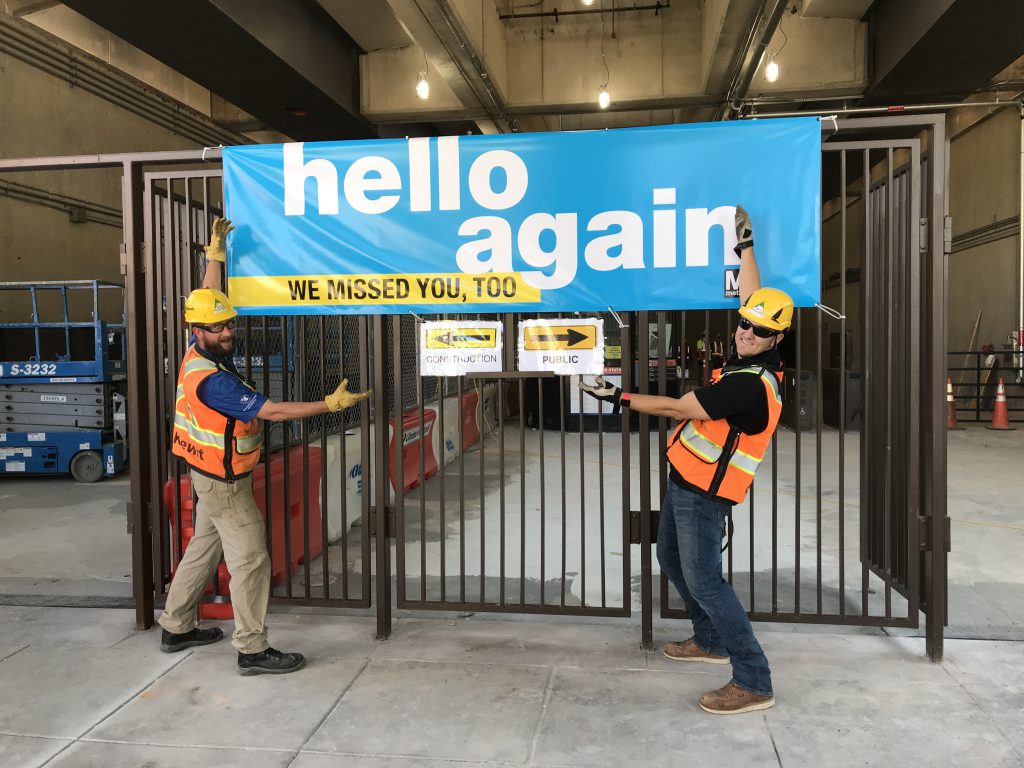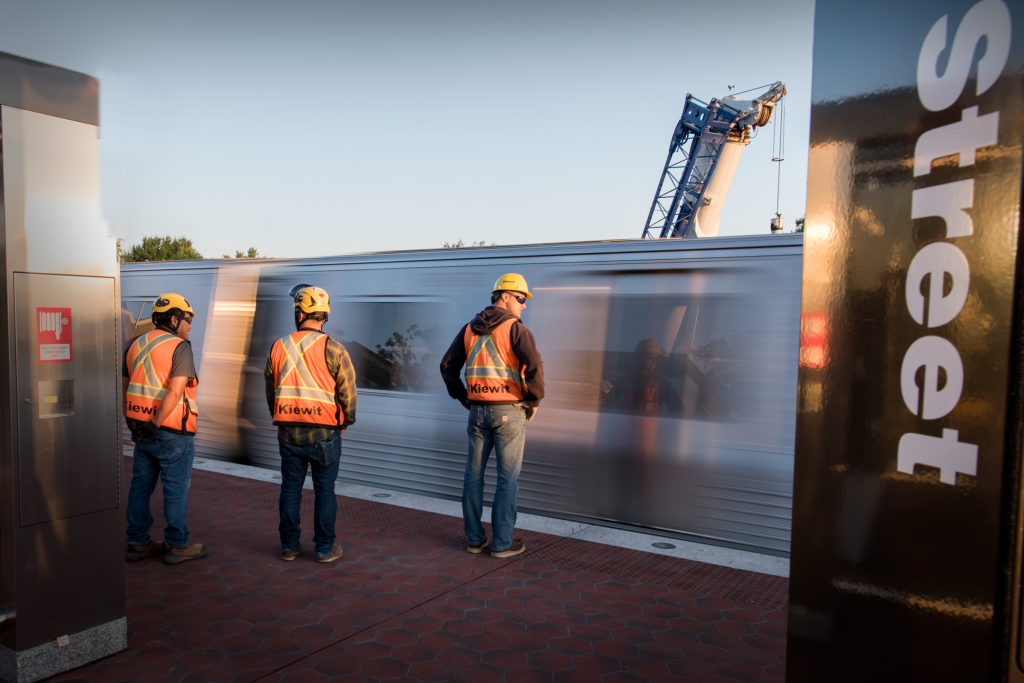In an unprecedented move, the Washington Metropolitan Area Transit Authority (Metro) decided to close all six of its Metrorail stations south of Reagan National Airport this summer for critical platform repairs and infrastructure improvements. Compared to previous platform reconstruction projects, this approach reduced the length of the project by as much as 94%.
Instead of a lengthy combination of overnight work, single tracking and weekend outages that stretch on for years, Metro fully closed stations, allowing contractors to have 24-hour access to the work sites instead of limited, sporadic hours.
Kiewit Infrastructure Co. was awarded the $200 million project in November 2018 and had from Memorial Day weekend until the evening of Sept. 8 to complete the repairs and get the stations ready for a return to passenger service on Sept. 9 — a fraction of the time it would take to do the repairs without the summertime shutdown.
On the right track
To ensure the project started off on the right track, Project Director Paul Beljan and Project Manager Brian Watkinson needed to ensure the best team was in place. Some of Kiewit’s best “athletes” came from all over North America — Georgia, Illinois, Florida, New York, Nebraska and even California.
Beljan and Watkinson’s approach to the project was to break it up into smaller, manageable segments. Each station was assigned a station manager to act as a project manager over their scope of work. Those station managers reported to one of three general superintendents, Fred Bianchi, Matt Higgins or Jim Majors, who reported to Construction Manager Joe Cunningham.
This approach allowed each station manager to focus on their individual stations as if they were project managers of their own isolated projects. Beljan, Watkinson, Bianchi, Higgins and Cunningham ensured that everything flowed seamlessly as a team.
While the six stations — Braddock Road, Eisenhower Station, Franconia-Springfield, Huntington, King and Van Dorn Station — had similar scopes of work, each station had its own unique challenges and features.
Platform edges
Repair of the cantilevered platform edge was one of the most pivotal scopes of work for each station. Some of the edges were beginning to deteriorate at a rapid rate, and Metro had installed temporary supports to ensure passenger safety until reconstruction could take place.
Kiewit’s task: remove the old edges and replace them with new, structurally sound edges.
In total, the station teams removed and replaced 7,200 linear feet, or 1.4 miles, of platform edge.

Upgraded tile
All platform tile needed to be demolished and replaced with an upgraded slip-resistant tile. Shortly before the shutdown began, Metro added a change order to have Kiewit replace all tile throughout the stations, including the mezzanine areas. While some stations were able to complete the mezzanine tile replacements within the shutdown window, some teams finished the task later in the fall due to the manufacturer’s ability to produce the tile.
New shelters, benches and pylons
Crews installed stainless-steel platform shelters equipped with USB charging ports. In each shelter, crews installed 55-inch digital displays and new windscreens to provide Metro customers with protection from the elements. The new digital displays replaced static maps and will display dynamic content such as service alerts, important messages and emergency information.
In total, Kiewit installed 128 passenger information and map displays across all stations.
Making the most of the shutdown
Early in the design process, Metro identified additional scopes of work that should be performed at some of the stations to take full advantage of the summer shutdown. In response, Kiewit mobilized 50 additional people to complete the additional scope.
Hump-free at Braddock Road Station
Among Metro’s list of change orders for the Platform Improvement Project was the elimination of the “Braddock Hump.” When Braddock Road Station first opened in 1983, the platform at the south end was approximately two to four inches higher than the level of the train floor, creating a barrier for wheelchair users exiting a train and posing a tripping hazard for riders. The Braddock team adjusted the piers and rotated the platform bearings to bring the 1.6-million-pound platform to an even level.
“We completed this portion of work eight weeks ahead of schedule,” Beljan said. “The team controlled the work from day one with a good estimate. We understood the risks and put the right people and focus on our critical path.”
Return to service
On Sept. 9, commuters at Metro’s six Blue and Yellow line Metrorail stations south of the Reagan National Airport were welcomed back to the remodeled platforms. While the end of the summer shutdown marked the completion of the majority of the project, there was still work to be done. Finishing touches, civil work and mezzanine tile replacements continued at some of the stations, as well as work in the bus loops adjacent to the stations, including installation of new stainless steel bus shelters.








